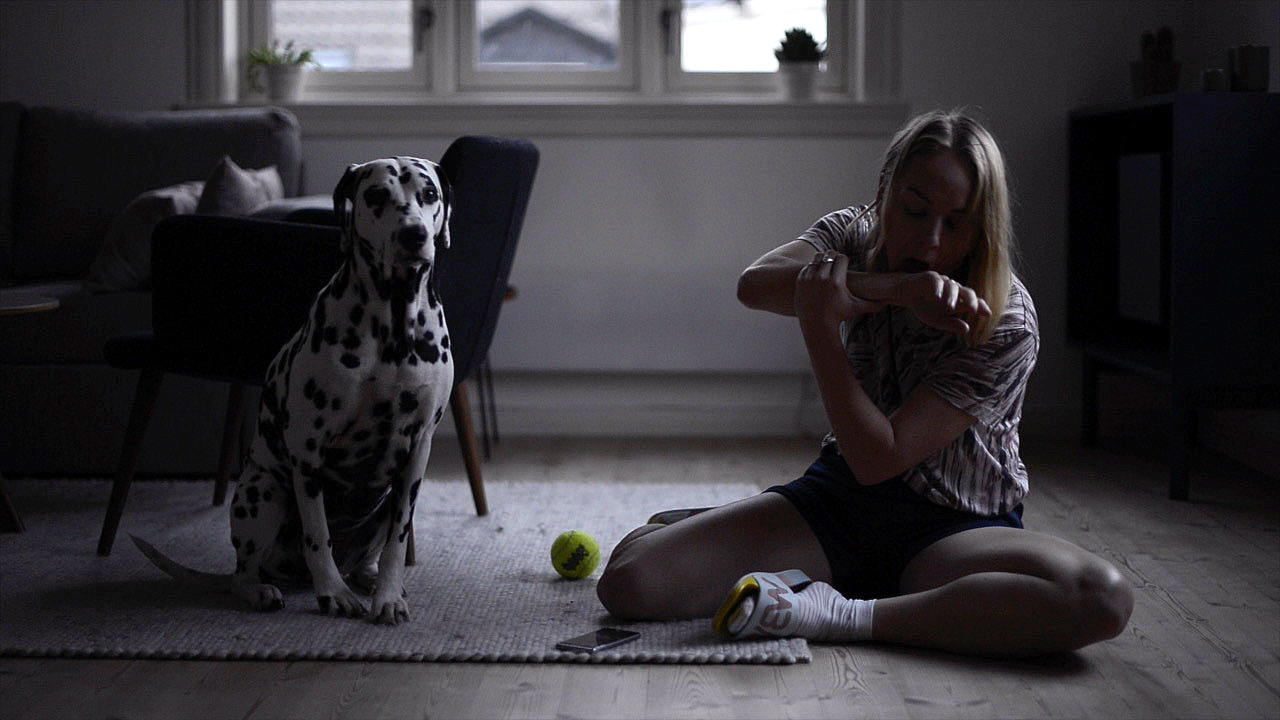Guise, 2016
4-channel video installation.
Prosjektrom Normanns, Stavanger, Norway.
November 2016.
No human society exists devoid of other animals. Other animals, of course, live quite happily devoid of human contact: Sharks sharking through the Arctic Ocean for centuries, nearly blind in the deep, only ever meeting up for reproduction. Packs of spotted hyenaes traversing the savannah, heads low and shoulders high in a single line through tall grass. I haven't seen them. They don't want to know me: Wolves, oxen, or boars.
We decided we wanted to know them, keep them. We reshaped them with specific purposes in mind. We decided we wanted their muscle, their meat, their milk and skins. We decided we wanted their companionship. Humans are a species prone to loneliness. We like having our likeness – and distinctiveness – confirmed through the bodies of others. We've grown accustomed to thinking like this: The other body should affirm me.
We talk to our pets. Endlessly. What for? To draw them nearer. We joke that we're envious of them: Nothing on their minds. We joke that we wish we could read their minds. Do we think it would be a mirror? We imitate our pets, mirror them back: I see you. Do you see me?
Schopenhauer famously conversed his dog on their walks. He'd call the dog «atman» – «soul» in sanskrit – in affectionate moments. Other times and in different states, he'd scream at the dog. «Mensch!» he'd call it, as if the word was an accusation. In Western cosmology, there was a belief that the world itself was the Word of God, and that all living things had a given meaning. The pelican, for example, who was thought to rip open its breast to bring its children to life, was a living example of Jesus Christ. But a pelican isn't a symbol any more than a dog is an emblem for Man. A pelican is a pelican. A dog, itself.
We are never near another body without wondering about it. We make all kinds of assumptions. As young children, we assume that we will learn to understand the language of a dog or a crow the same way the rest of the world will eventually reveal its secrets to us. The child greets another animal like kin; it belongs in and to the world and its beings. It has not yet learnt that the workings of the world and its bodies will remain something they'll only catch in glimpses.
As adults, the proximity of other animals remain a source of pleasure to many. This pleasure is rarely discussed, as it is simultaneously general, and intimately private. In the scenario of the house pet, the presumption of the animal's dependency and mutual love evokes tenderness and shameful doubt. Outside of the home and the habitual, it is a different story all together. It may be a cat on a fence post, on the lookout for some body. Not yours.
Try calling it over: It will not come except at its own volition. We happen upon these glimpses, we don't facilitate them; lives that intersect with ours, but are indifferent to us. We call the cat, it doesn't come. We taste language as it shrinks in our mouths. The difference between us cannot be bridged by language. It has to be bridged by our bodies.






Performers: Irene Theisen, Harald Beharie, Kiyoshi Yamamoto, Liv Basberg
Co-producer: Magnus Nyquist
Sound: Njål Clementsen
Text: Nora Joung
Photo credit: Jan Inge Haga
The project was founded by:
Bergen Municipality
Arts Council Norway
Billedkunstnernes Vederlagsfond
BEK